Free Rnage Beef Ala and Conventional Beef
58,383 Readers
Is Grass-Fed Beef Practiced for Your Health & the Planet?
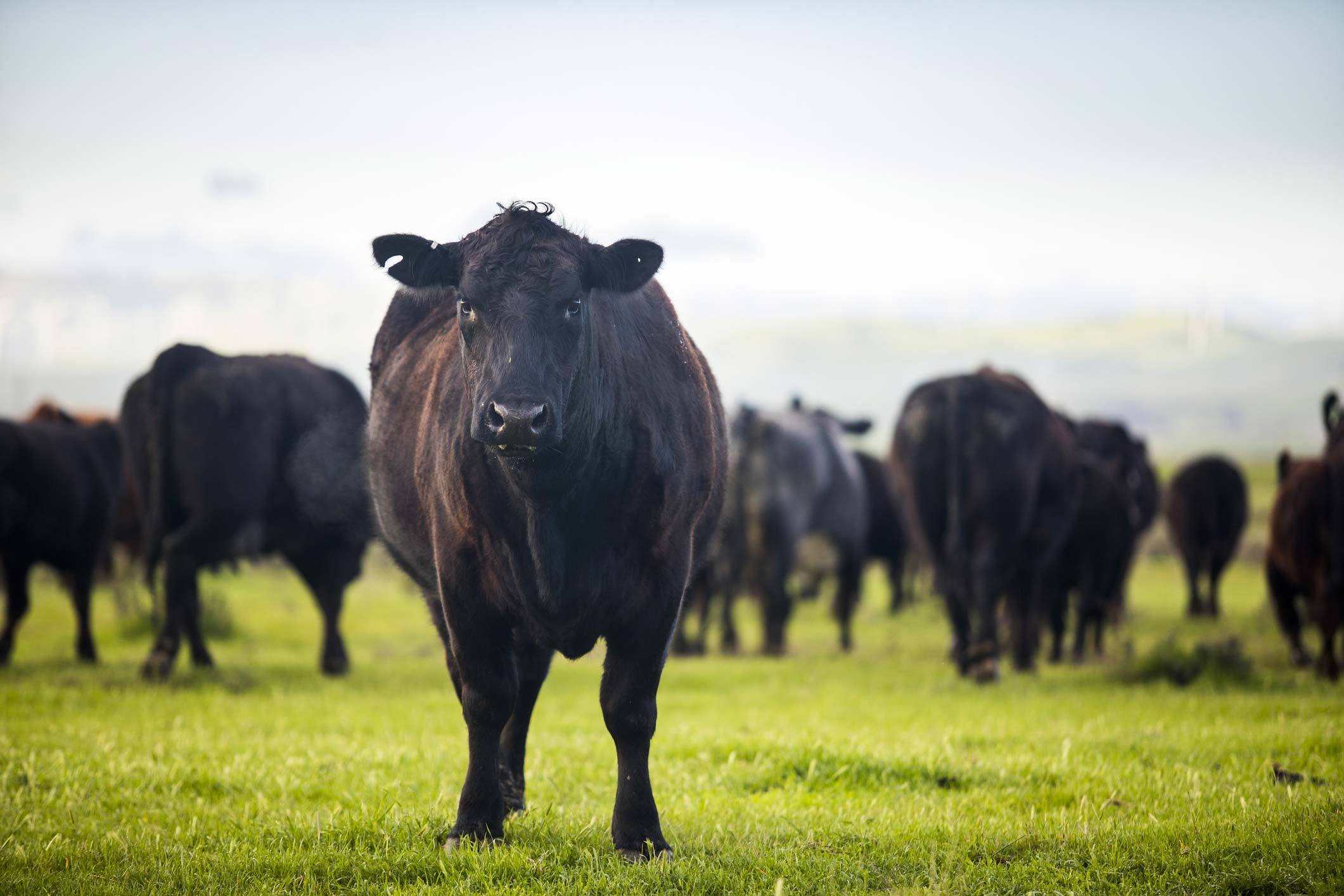
Cattle (like sheep, deer, and other grazing animals) are endowed with the ability to convert grasses, which nosotros humans cannot digest, into flesh that nosotros are able to assimilate. They tin practise this because, unlike humans, who possess only one tummy, they are ruminants, which is to say that they possess a rumen, a 45-or-then gallon fermentation tank in which resident bacteria convert cellulose into protein and fats.
In the Us, all the same, about 97% of the cattle raised for beef spend the latter portion of their lives in feedlots, where they're fed corn and other grains that humans could eat — and they catechumen it into meat quite inefficiently. Since it takes anywhere from, depending on who is doing the adding and what they include, 4 to (according to some estimates) equally many as 20 pounds of grain to brand a pound of feedlot-derived beef, we actually get far less nutrient out than nosotros put in. What nosotros've created is effectively a protein factory in opposite.
And nosotros do this on a massive scale, while nearly ii.five billion people on our planet are experiencing some level of hunger.
But industrialized beef is facing criticism from a growing body of leaders. The United nations' Intergovernmental Console on Climate Change is calling for humanity to eat less meat in order to aid us save the planet. Organizations like the American Heart Association and the National Cancer Constitute are urging consumers to eat less (or no) cherry-red meat in order to help fight heart disease and cancer. And even superstar entertainers like Beyoncé and Jay-Z have been getting in on the activeness, offering free concert tickets to fans willing to commit to a plant-based diet.
The Rising of Grass-Fed Beefiness
Despite the calls for consumers to swallow less meat in order to fight environmental issues similar climatic change — too equally inquiry showing that red meat isn't doing your health whatever favors — beef consumption in the US has recently been on the rise. This is partly fueled by speedily expanding sales of grass-fed beef.
Advocates for grass-fed beef say it has wellness and environmental benefits compared to conventionally-raised beef. Marketers and enthusiasts praise information technology equally a good for you food rich in poly peptide, B vitamins, fe, and other nutrients. And some environmentalists gush over the theory that properly managed grass-fed beef could help sequester carbon in the ground, building topsoil and fighting climatic change at the aforementioned time.
And consumers are responding. The grass-fed beef marketplace has emerged equally a multi-billion dollar manufacture that shows no sign of slowing down. In fact, the market for grass-fed beef is predicted to abound past $14.5 billion betwixt 2020 and 2024.
But is there truth behind these behavior about grass-fed beefiness, or is this simply a bunch of hearsay by environmentally conflicted burger-lovers trying to justify their meat habit? Is grass-fed beef actually better for you, the animals, or the environment? And if it is, does that hateful y'all should eat it?
What Is Grass-Fed Beef?
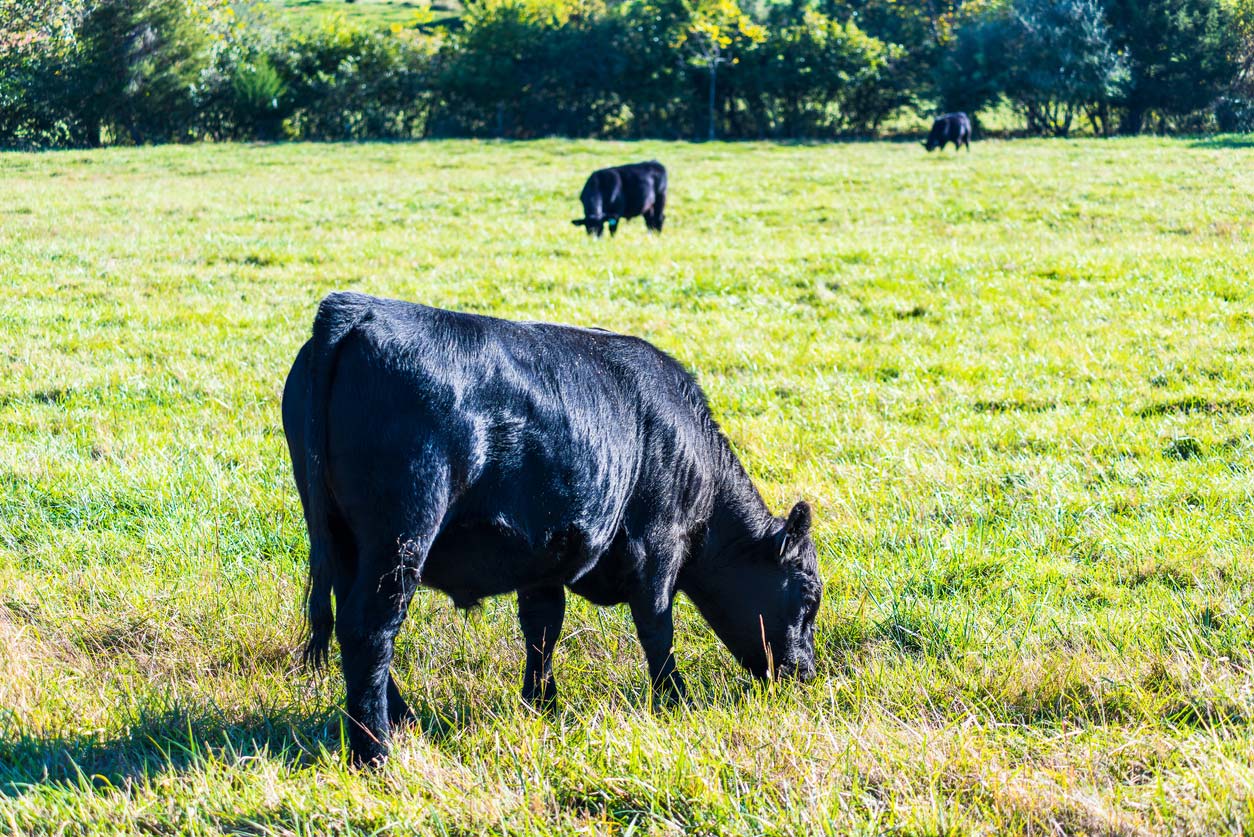
Completely grass-fed beefiness was the norm in the beef industry before the 1950s. Cattle got to live longer back then, sometimes reaching their 3rd birthdays. In the centre of the 20th century, equally the popularity of hamburgers and fast food in the US grew, farmers and ranchers needed a way to fatten up cattle faster, so they started feeding them energy-dense grain and soy instead.
Today, nigh cattle in the United States get-go out eating grass, but are fattened — or what the industry euphemistically calls "finished" — on grain and soy for their last 160-180 days of life. (While this accounts for barely a 3rd of their lifespan, more than 50% of their weight gain occurs during this final half-twelvemonth.) Cattle who are fattened up in CAFOs reach their slaughter weight in as little every bit 14 months.
Grass-fed cattle, on the other manus, feed on grass and other forage for their entire lives. Since the grass they consume is much less calorie-dense than feedlot grain, they're sent to slaughter later — usually betwixt one and a half and two years onetime. Their average weight at slaughter is nearly one,200 pounds, compared with about 1,350 pounds for feedlot cattle.
So grass-fed cattle live longer and yield less edible meat than their grain-fed counterparts.
Is Grass-Fed Beefiness Meliorate than Conventional Beef?
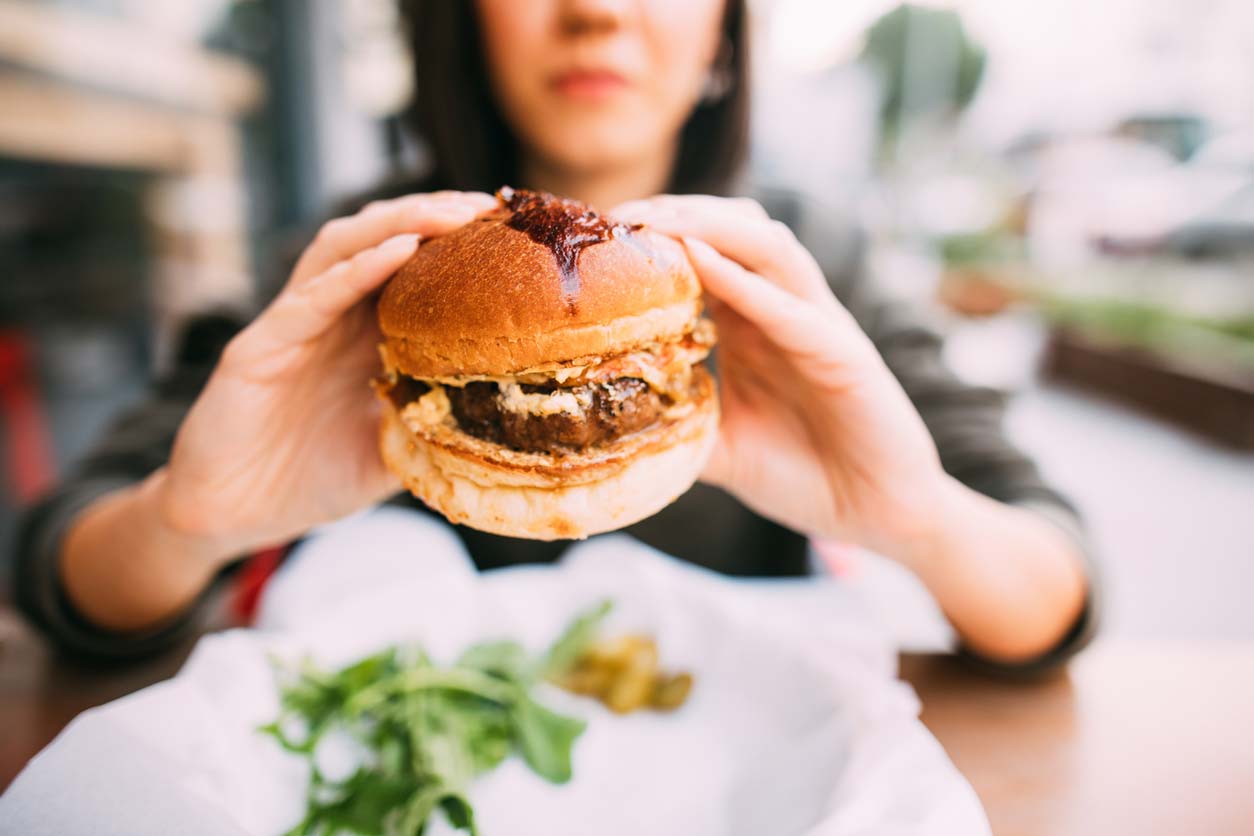
Despite all the claims that grass-fed beef is ameliorate than conventional beef, what does the enquiry actually bear witness the states? Let'south have a look at the three chief areas where grass-fed beef is said to exist a better option: diet, the environment, and the handling of animals.
Grass-Fed Beef Nutrition
Grass-fed beef is marketed to consumers as beingness nutritionally-superior to conventional beef. And information technology is. But that's non a very high bar. When compared on a per calorie basis, grass-fed beef is higher in B vitamins, iron, phosphorus, zinc, selenium, and vitamins A and E (information technology's also touted as being higher in omega-three fatty acids, merely the truth is it nonetheless has merely a negligible amount of them). Plus, it's lower in saturated fat.
So grass-fed beefiness is more nutritious than conventional grain-fed beefiness. But that doesn't exactly make it a "health food." Overall, it's withal high in saturated fat, which is linked to an increased risk of eye disease, type ii diabetes, and Alzheimer'southward disease. And so there'south cancer. Carmine meat of all kinds, including grass-fed beef, is labeled a class 2A carcinogen by the World Health System, meaning that it'southward "probably cancer-causing" to humans.
Recent research also suggests that ruby meat, grass-fed or non, promotes the body'south product of a compound chosen TMAO, which can contribute to heart disease and other chronic lifestyle diseases. And all red meat can exist a nasty vector for the spread of pathogenic leaner, which can sneak into meat during processing, grinding, and packaging and cause foodborne illness. While the risk of dangerous bacterial contamination from grass-fed beef is lower, it'southward certainly not zero.
On the whole, red meat consumption is associated with higher overall mortality rates. This means that in written report after study, the more red meat people consume, the sooner they die.
Grass-fed beefiness is clearly a nutritional improvement over conventional grain-finished beef. Merely we don't have whatever studies that accept demonstrated positive health effects from eating information technology over time. And we know that, like grain-fed beefiness, information technology's still loftier in saturated fatty. It still contributes to your production of cancer-causing TMAO. And information technology'southward still utterly devoid of cobweb (a critical gut-health food that less than five% of united states of america are getting plenty of).
Grass-Fed Beef & the Environment
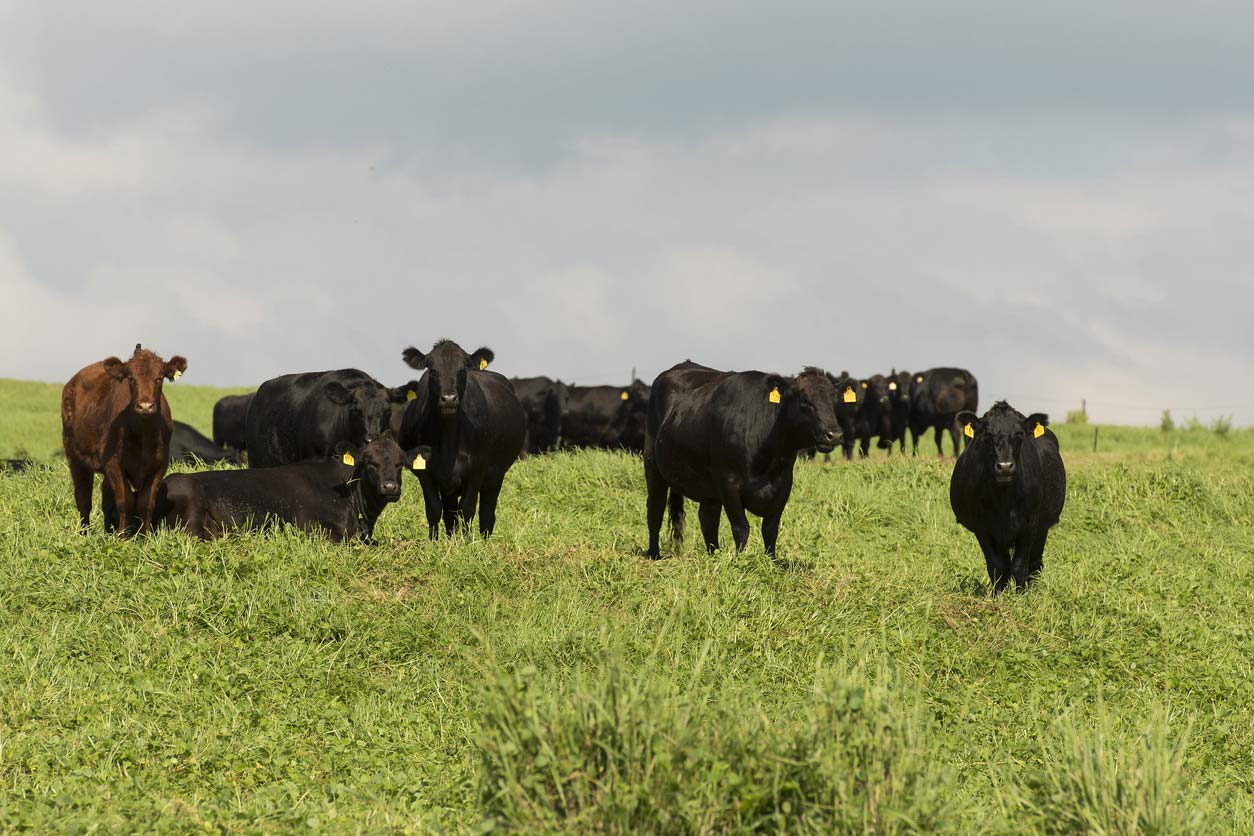
Grass-fed beef advocates claim that it's meliorate for the environment than traditional beef. But that, in and of itself, is non saying much. Later on all, conventional beef production is nothing short of an environmental disaster.
Problems with the Cattle Industry
At least one-third of the world's abundant land is used to raise livestock. And new areas are constantly being cleared through deforestation to make more room — near alarmingly in the precious and irreplaceable Amazon rainforest. Beef cattle product contributes an enormous amount of greenhouse gas emissions, including methane, nitrous oxide, and carbon dioxide. In fact, according to a UN Food and Agronomics Organization written report, cattle impact our global climate more than all of the world'south cars, planes, trucks, trains, and ships combined.
Cattle eat plants, which is where they receive the nutrients that they capture in their flesh. But they as well plow those plants they eat into hoof, hide, bones, energy, methane, and manure — lots and lots of manure. After cattle come into a feedlot, they gain enough weight to produce about (according to my estimation) one new pound of beef for every 12 pounds of feed input. The other xi are essentially wasted.
A 2011 analysis past the Ecology Working Group looked at the carbon footprint of various foods over their unabridged life-cycle, including the raw materials that go into them. In other words, in totality, how much do different foods contribute to climate change?
They ended that beef product emits nigh ten times more greenhouse gases per pound of meat than chickens or pigs, which themselves emit nigh 10 times more than legumes. This means that a pound of beef is responsible for 100 times more greenhouse gas emissions than a pound of beans.
And so there'southward h2o. Some experts estimate that it takes more than 1,800 gallons of water to produce a pound of conventionally raised beef. In full, the livestock sector uses at least 8% of the world's clean, fresh h2o supply while polluting much of the residuum.
Is Grass-Fed Beefiness Any Different?
Proponents of grass-fed beefiness tell us that, unlike conventional beef, grass-fed beefiness can exist raised in a fashion that is actually good for the planet. They argue that it improves soil with organic matter and benefits carbon sequestration and that it restores natural ecosystems and wild fauna habitat, increases biodiversity, reduces our reliance on petrochemicals, improves h2o quality, and reduces greenhouse gas emissions similar carbon dioxide. That all sounds good, but is it really true?
Carbon Sequestration
The earth has lost enormous reserves of soil carbon over the years, as humans have converted forests and grasslands into land for crops and grazing cattle. The thought of soil carbon sequestration is that the carbon previously lost from soil could exist returned to it via practices that restore degraded soils and conserve existing soil in a soil carbon puddle. There are several possible means to practise this, one of which is called carbon farming. In this process, farmers employ plants to trap carbon dioxide, then employ strategic practices to trap carbon in the footing — like planting long-rooted crops, incorporating organic materials in the soil, and tilling the land less oft.
Another arroyo is rotational grazing. According to Successful Farming: "Rotational grazing involves decision-making livestock'southward access to pastures, allowing animals to graze in designated paddocks for limited periods of time. The livestock are rotated to fresh pasture before they graze the grass downwardly to the footing. This provides the grazed pastures with ample fourth dimension to rest then that the leaf matter can regrow. The more leaf matter a establish has, the more than sunlight it can process through photosynthesis and the longer its roots will be. These root systems are key to maintaining healthy soils."
Attaining Carbon Neutrality
A 2018 study published in Agricultural Systems, which was conducted by Michigan State Academy researchers and the Matrimony of Concerned Scientists, suggested that the finishing stage of grass-fed cattle could be managed in a manner that makes them strongly carbon-negative in the offset few years. Over time, nonetheless, the buildup of carbon in the soil decreases, and the net impact of even well managed grass-fed herds becomes only carbon neutral. In conclusion, the researchers stated, "… the path to a climate-friendly, scientific discipline-based, ethically consistent, and practically achievable decision on beef production and consumption remains about as clear as the mud in a herd-trampled pasture."
Considering the devastating environmental consequences that back-trail conventional mod beef product, it'southward heartening to hear that it might be possible, with well managed grass-fed herds, to accomplish carbon neutrality in the long run.
Merely although that could be an important stride in the right management, is it really a reason to chow downwardly on beef? Virtually 60% of the earth'southward agricultural state is used for beef production. And all that land yields less than 2% of humanity's calories. What else could be done with that land that might more than effectively regenerate soil and sequester carbon? What if nosotros used it to grow cover crops? Or used it to grow trees? It turns out, in that location are many ways we tin use state to capture carbon far more effectively than rotational grazing. If you want some serious carbon-sequestration promise, check out the 8 solutions in this article. (Spoiler warning: the give-and-take "beef" does non appear.)
The Remainder of The Environmental Picture
In some ways, grass-fed beef might actually be worse for the planet than feedlot beefiness. The biggest reason for this is that grass-fed cattle have longer to fatten up, so they live an average of 18-24 months, whereas feedlot cattle are typically killed at around xv months. This extra longevity necessitates more than cattle roaming around — and more state on which to grow their (grass) food. If we moved all cattle out of feedlots, and nosotros didn't reduce our beef consumption dramatically, we'd observe ourselves with a severe shortage of grazing land. Co-ordinate to a 2012 study published in the periodical Animals, if all the US beefiness produced in 2010 were grass-fed, the industry would accept required an additional 200,000 square miles — an surface area larger than all the land in the states of New York, Pennsylvania, Florida, and Ohio combined. Of course, we'd free up some of the land currently growing corn, soy, and other feedstuffs for cattle feed. But non well-nigh enough to provide for all those cows roaming around for all those boosted months.
Amazonian Deforestation
For a look at the worst possible environmental bear on of big-scale, grass-fed beef production, we demand look no farther than Brazil, where an environmental nightmare of ballsy proportions is unfolding. In 2009, Greenpeace released a written report titled "Slaughtering the Amazon," which presented detailed satellite photos showing that Amazon cattle were the biggest single cause of global deforestation. And in turn, are responsible for 20% of the world's greenhouse gases.
Since then, the state of affairs in Brazil has just gotten worse. Even Brazil'due south authorities, whose policies have made the nation the earth's largest beef exporter, and dwelling to the planet's largest commercial cattle herd, acknowledges that cattle ranching is responsible for lxxx% of Amazonian deforestation. Much of the remaining 20% is for country to grow soy, which is not used to make tofu. Most is sold to China to feed livestock.
Amazonian cattle are complimentary-range, grass-fed, and possibly organic, but they are even so a plague on the planet and a driving force behind global warming.
Although well-managed grass-fed cattle might be able to sequester carbon in the soil, and they can exist raised on natural grassland instead of freshly destroyed rainforest, they still contribute to climate change in other ways. The greenhouse gas marsh gas, which cattle produce in staggering amounts, is 28 times more potent than carbon dioxide over a hundred-year time frame. With the college fiber content in grasses than grains, cattle may produce even more marsh gas than grain-fed ones. And with grass-fed cattle living up to twice every bit long as feedlot cattle, they produce methane for longer, too.
Is Grass-Fed Beef Amend for Cows?
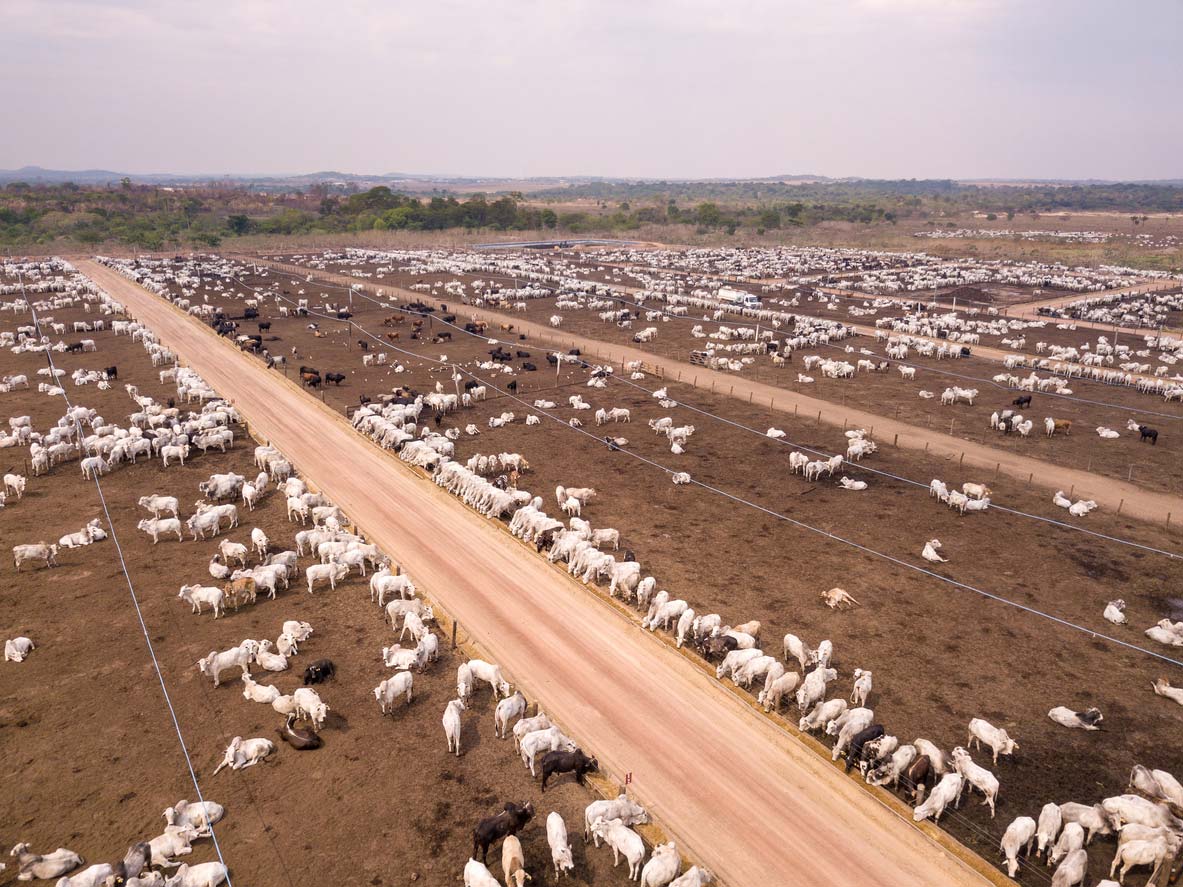
Grass-fed beef appeals to consumers who are told that it'due south ameliorate for the animals. Merely is this accurate?
In some large means, yes. They're healthier, and nearly certainly happier, than conventional cattle. Again though, that's a low bar.
Feedlots such as California'southward Harris Ranch routinely cram up to 100,000 cattle into ane square mile. Simply the cows aren't potty trained, and they don't pay for sewer hookups, either. So they alive their unabridged lives in a mess of their own excrement.
Feeding cattle grain in feedlots can cause health issues, too, including liver abscesses, which is one of the reasons that grain-fed cattle are typically given antibiotics right in their feed.
Author Michael Pollan describes what happens to cattle when they are taken off of pastures and put into feedlots and fed corn:
"Perhaps the most serious thing that tin go wrong with a ruminant on corn is feedlot bloat. The rumen is always producing copious amounts of gas, which is normally expelled by belching during rumination. Merely when the diet contains besides much starch and too little roughage, rumination all just stops, and a layer of foamy slime that can trap gas forms in the rumen. The rumen inflates like a balloon, pressing against the animate being's lungs. Unless action is promptly taken to salvage the pressure (usually by forcing a hose downward the animal's esophagus), the cow suffocates."
Feedlot beef as we know information technology today would exist impossible if it weren't for the routine and continual feeding of antibiotics to these animals. This leads direct and inexorably to the development of antibiotic-resistant leaner. These new "superbugs" are increasingly rendering our antibiotics ineffective for treating illness in humans.
In comparing, cattle feel greater well-existence and meliorate health when they're able to consume the nutrition for which their digestive systems were designed, and when they take access to more outdoor space.
While it's certainly true that grass-fed cattle live significantly improve lives than their feedlot counterparts, there's still zero cheery about their deaths. According to People for the Ethical Handling of Animals, many cows are alive and conscious for equally long as seven minutes afterward their throats are cut. And some have their legs cut off while still animate.
What Grass-Fed and Organic Beef Labels Actually Mean

Grass-fed and organic beef attract premium prices. (In more layman'due south terms: They're expensive.) Only the significant of the terms is poorly regulated and oftentimes misunderstood. Technically grass-fed should mean that the cattle lived its entire life on pasture, without confinement, eating grass. But keep in mind that nigh cattle are grass-fed for at least part of their lives until they weigh 600 to 800 pounds, at which signal they are shipped off to a feedlot for fattening.
And the US authorities isn't of much help here, either. Starting in 2016, the USDA dropped regulatory control of the term altogether. So some products might be deceptively (yet legally) sold as "grass-fed" beef, even if cattle lived a portion of their lives cooped up in feedlots, eating grain and soybeans.
Consumers who care virtually this critical stardom need to make sure they're getting 100% grass-fed beef, which is sometimes called "grass-finished beef."
The USDA organic certification guarantees that the animals were raised on pesticide-free food, and were never given hormones or antibiotics. Simply beef labeled "organic" tin still come from animals that were cooped upwardly in feedlots and fed grain and soy for the latter part of their lives.
Anyone looking for truly organic, 100% grass-fed meat needs to look carefully at what they're actually getting.
The American Grassfed Clan (AGA), which advocates for grass-fed producers and offers a certification programme for cattle farmers, assures that beefiness bearing its seal comes from cattle raised on a 100% grass-fed diet. And they add further specifications, too, including that the cattle are raised past family farmers, on pastures without confinement, and are never fed antibiotics or hormones. In that location appears to be a few hundred fellow member farms across the US that currently conduct the AGA certification.
There are other certifying bodies, besides, including the Food Alliance Grass-Fed Certification, and the USDA'due south Modest & Very Small Producer Program.
Grass-Fed Beef: Better, Merely Not All-time
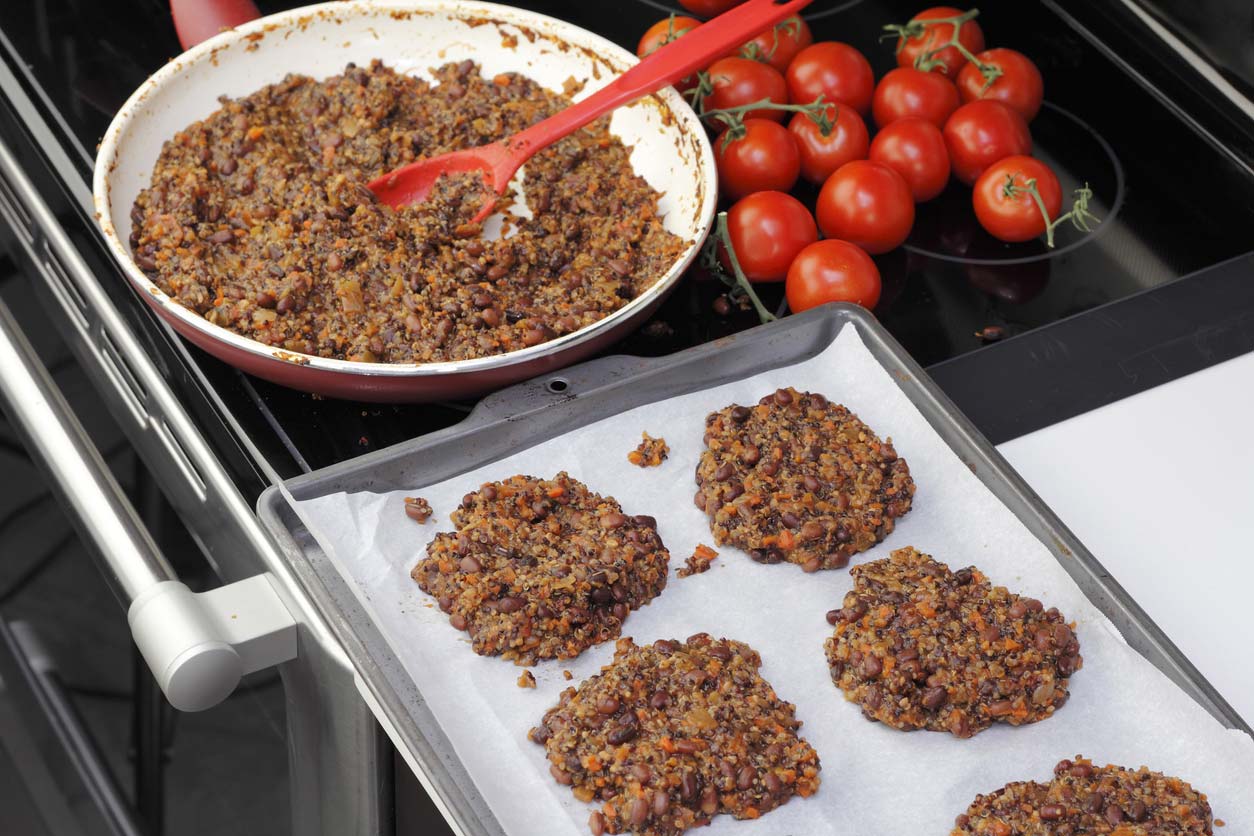
Conventional feedlot-finished beef is nothing brusque of a health, environmental, and ethical disaster. And grass-fed beefiness is arguably better on all three fronts. So if yous're going to eat beef, then there are good reasons to choose grass-fed and organic beef over the products of feedlots.
But if you want to save money, and practise a practiced turn for your wellness, the planet, and the animals, in that location are enough of constitute-based options to choose from. (For our article on how to get rolling on a whole-foods, found-powered diet, click here.)
There are also institute-based meats, of course. But don't forget most beans. If the whole world started swapping beans for beefiness, nosotros could take a huge bite out of climate alter. We could save what's left of the Amazon rainforest. We could spare the lives of tens of millions of cattle. Nosotros could restore the fertility of our soils. And we could prevent endless heart attacks, too.
Tell us in the comments:
- Exercise yous swallow grass-fed beef? Why or why not?
- Do y'all think that grass-fed beef can exist role of the climate change solution?
- What are some of your favorite beefiness-free food alternatives?
Feature image: iStock.com/adamkaz
Read Next:
- Veggie Burgers and Plant-Based Meat: Pros and Cons
- What'due south All Wrong Almost Annals Of Internal Medicine's Red and Processed Meat Advice
Source: https://foodrevolution.org/blog/grass-fed-beef-2021-update/